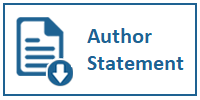A Bibliometric Analysis of The Term DataOps
DOI:
https://doi.org/10.31937/si.v15i1.3450Abstract
This paper aims to analyze research trends of the term DataOps scientifically through bibliometric studies. Initial data were collected from Scopus database from 2018 to 2023 which resulted 34 documents, while in other hands we found more than 1000 documents in the Google Scholar database collected using Publish or Perish. Five years of data is collected because the scientific publications on term DataOps started to increase since 2018. We have deployed ``bibliometrix 3.0'', the r-package, and VOSviewer to analyze key literature aspects. Since the rise of the term DataOps, significant contribution to its definition and practical applications can be observed. DataOps enthusiasts collaborate to create a common principle for uniformly applying the methodology in the various data operation environments. DataOps will continue to evolve into an effective and reliable data management system. The findings in this study will help related researchers recognize the research trends of topics in DataOps research globally and suggest future research directions.
Downloads
Downloads
Published
How to Cite
Issue
Section
License
Authors retain copyright and grant the journal right of first publication with the work simultaneously licensed under a Creative Commons Attribution-ShareAlike International License (CC-BY-SA 4.0) that allows others to share the work with an acknowledgement of the work's authorship and initial publication in this journal.
Authors are able to enter into separate, additional contractual arrangements for the non-exclusive distribution of the journal's published version of the work (e.g., post it to an institutional repository or publish it in a book), with an acknowledgement of its initial publication in this journal.
Copyright without Restrictions
The journal allows the author(s) to hold the copyright without restrictions and will retain publishing rights without restrictions.
The submitted papers are assumed to contain no proprietary material unprotected by patent or patent application; responsibility for technical content and for protection of proprietary material rests solely with the author(s) and their organizations and is not the responsibility of the ULTIMA InfoSys or its Editorial Staff. The main (first/corresponding) author is responsible for ensuring that the article has been seen and approved by all the other authors. It is the responsibility of the author to obtain all necessary copyright release permissions for the use of any copyrighted materials in the manuscript prior to the submission.















